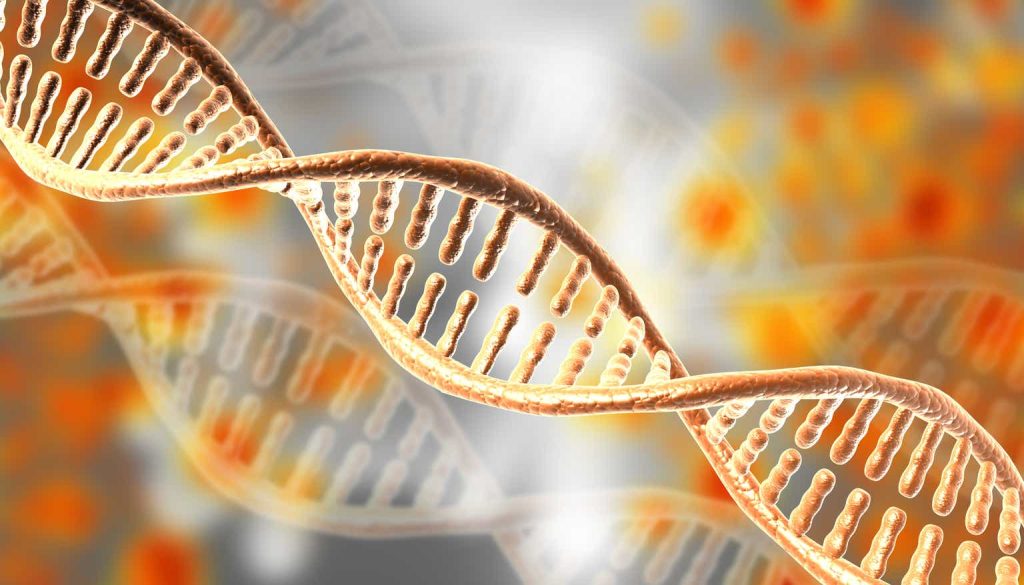There is a major inflection point expected to happen with Bicycle Therapeutics plc (NASDAQ:BCYC) in the 2nd half of 2024. That is when it expects to complete dosing of its open-label phase 1/2 Duravelo-1 study and then to also report additional clinical data from it.
It is not going to be your typical release of data for one solid tumor type only. Even though there is a focus to advance the use of BT8009 for the treatment of patients with metastatic urothelial carcinoma [mUC], other data to be released at that time will include ovarian, triple-negative breast and non-small cell lung cancer solid tumor types. In addition, there will be a look at using BT8009 in combination with Keytruda [pembrolizumab] specifically for the treatment of patients with mUC.
The phase 2/3 Duravelo-2 study using this drug to treat the mUC is already underway and there will be two shots on goal in specific patient populations that I will note below. One other important item to mention is that Bicycle Therapeutics is working on advancing other bicycles as part of its pipeline, which are BT7480 and BT5528 for the treatment of patients with solid tumor types. Early-stage data for both of these tumor types are to also be released in the 2nd half of 2024. With several catalysts on the way in 2024, plus the advancement of a differentiated technology type targeting solid tumors, I believe that investors can benefit with any potential gains made.
BT8009 For The Treatment Of Patients With Metastatic Urothelial Carcinoma
The main clinical program to go over in Bicycle Therapeutics’ pipeline would be the use of BT8009, which is being advanced for the treatment of patients with metastatic urothelial carcinoma [mUC]. The use of this drug is being explored in the ongoing phase 2/3 Duravelo-2 registrational study for the treatment of this patient population. Even though there is no catalyst relating to this late-stage study, that doesn’t mean that there aren’t any milestones this year that investors still can’t capitalize on. Two catalysts of which relate to the use of BT8009 for the treatment of patients with mUC. They are the targeting of late-line, enfortumab vedotin naive mUC patients and then another cohort dealing with BT8009 being given in combination with weekly Keytruda for first-line mUC patients as noted above. In addition, to new findings to be released using this bicycle drug to treat patients with other solid tumor types that express Nectin-4, such as the following:
- Ovarian cancer
- Non-small cell lung cancer [NSCLC]
- Triple-negative breast cancer [TNBC].
The bottom line is that the release of such data should shed additional light on whether or not Bicycles are appropriate in being able to not only generate sufficient efficacy, but at the same time to lower toxicity associated with other treatment modalities.
This company is on the right track thus far with its bicycle technology. How so? That’s because thus far it has already been able to release promising results thus far when it used 5 mg/m2 weekly dosing of BT8009, when targeting enfortumab vedotin [EV] naive metastatic urothelial carcinoma [mUC] patients in the phase 1/2 open-label Duravelo-1 study. It was shown that when these patients were treated with Bicycle’s drug, that there was an objective response rate [ORR] of 38% or 10 out of 26 patients responding. ORR being the patient either having a partial response [PR] or complete response [CR].
In addition, it was noted that the median duration of response [mDOR] for 10 patients was 11.1 months, with 5 patients still receiving treatment. I believe that this is pretty good data, when you first consider that they are late-line metastatic patients. Plus, the fact that they had not yet been given standard of care [SOC] EV. EV is also a nectin-4 targeting drug and has already been approved to treat patients with mUC.
The thing is that Bicycle’s technology has the potential to be a best in class nectin-4 targeting agent. Not only has it seen significant efficacy in this metastatic patient population, but it has done so with limited adverse events [AEs] compared to other nectin-4 drugs. The most frequent adverse event 10 out of 34 patients in the study [29%] who had grade 1 peripheral neuropathy. There was only one ≥Grade 3 Adverse event, which was neutropenia. The bottom-line is that there is a shot at BT8009 becoming the best in class agent for nectin-4 type targeting drugs.
The thing is that BT8009 is a Bicycle toxin conjugate [BTC] agent that is being deployed to targeting nectin-4 expressing solid tumor types. I bring this up, because this is only one shot on goal in using a bicycle drug from the company’s pipeline. Other bicycle drugs being deployed are as follows:
- Bicycle radio conjugate [BRC]
- Bicycle Tumor-Targeted Immune Cell Agonist [Bicycle TICA].
The point being that if it doesn’t ultimately work out with respect to using BTCs in targeting nectin-4 solid tumor types, then either one of these two technologies de-risks the pipeline slightly. It remains to be seen whether or not these other bicycles can do well in solid tumor types, but they at least may provide additional shots on goal. Speaking of these two other bicycles being deployed by it, it is expected that an update on the use of BRCs as part of the pipeline will happen in mid-2024. This is another milestone for investors to keep an eye on.
Financials
According to the 10-K SEC Filing, Bicycle Therapeutics had cash and cash equivalents of $526.4 million as of December 31, 2023. The reason for the cash on hand is because it was able to complete several financial transactions back in 2023 to generate a substantial amount of cash. It received net proceeds of $215.1 million from an underwritten public offering in July of 2023 for starters. In addition, it was able to obtain $34.2 million of net proceeds from an ATM offering program and also $95 million from its collaboration agreements with Novartis (NVS) and Bayer (OTCPK:BAYRY).
I believe that Bicycle Therapeutics plc has enough cash on hand to fund its operations for an extended amount of time and see no risk of any near-term dilution. The reason why is because the company’s management believes that it has enough cash on hand to fund its operations into 2026.
The only way I could possibly seeing it raise cash earlier than anticipated would be if any piece of news item causes the share price to trade higher considerably. If this were to happen, then management might consider enacting a financial transaction a lot earlier than expected.
Risks To Business
There are several risks that investors should be aware of before investing in Bicycle Therapeutics. The first risk to consider would be with respect to the ongoing phase 1/2 Duravelo-1 open-label study, which is using BT8009 for the treatment of patients with mUC and other solid tumor types like: Ovarian, TNBC, and NSCLC. There is no assurance that the additional data to be released from this early-stage open-label study will turn out to be positive. Nor that the release of such data will cause the stock price to trade significantly higher.
A second risk to consider would be with respect to the use of BT5528 for the treatment of patients with EphA2 expressing solid tumors. Data to be released in the 2nd half of 2024 from this study is going to include the targeting of mUC and other solid tumor types. Multiple cohort data is going to inform the company if this particular bicycle can be used to treat other tumors and if the biotech can expand into other areas.
A third risk to consider would be with respect to the advancement of BT7480, which is being developed for the treatment of patients with nectin-4 and CD137 tumor types. At the moment, the company is trying to determine the best recommended phase 2 dose [RP2D] to move on to the next stage of testing for. From there, it even intends to enroll cohorts dealing with the combination of BT7480 and checkpoint inhibitors. The ability for it to initiate testing in combination cohorts should happen during 2024. Eventually, updated data is going to be released from this specific program and there is no assurance that the combination portion of clinical testing is going to produce superior data over the monotherapy portion.
The fourth and finals risk to consider would be with respect to the multiple types of technologies the company is working on. That’s because BT8009 and BT5528 utilize what I stated above, which is Bicycle Toxin Conjugates [BTCs]. On the other hand, BT7480 is a Bicycle tumor-targeted immune cell agonist [Bicycle TICA]. This type of technology contains 3 bicycles to achieve its mechanism of action. The point here being that each Bicycle tech being deployed has a different mechanism of action [MOA] and there is no guarantee that one or all will end up achieving the intended efficacy in being able to treat patients with specific solid tumor types.
Conclusion
Bicycle Therapeutics is gearing up to report data from its studies using several bicycles to target various expressing solid tumor types. In particular, a major milestone to keep an eye on would be the additional data to be released in the 2nd half of 2024, which is the release of data from the phase 1/2 Duravelo-1 study, which is treating patients with metastatic urothelial carcinoma [mUC]. The first reason to keep an eye on this trial is because data from it is going to include a subpopulation for mUC. Plus, the fact that there already is a late-stage study in place for this program, which is the advancement of the phase 2/3 Duravelo-2 study.
A second reason to keep an eye on this study would be because of the possible expansion opportunity with BT8009. The goal is to target other nectin-4 expressing solid tumor types, such as ovarian, Triple-negative breast cancer [TNBC] and non-small cell lung cancer [NSCLC]. In particular, there is an interest to expand the use of BT8009 in being able to target NSCLC. Why would this be highly ideal? That’s because it is said that approximately 60% of NSCLC are nectin-4 overexpressed. As you can see, this is only one expansion opportunity, whereby a large portion of patients could be targeted. Such an expansion only deals with BT8009 and does not even entail what could be possible with the other Bicycles being advanced as part of its pipeline.
Editor’s Note: This article discusses one or more securities that do not trade on a major U.S. exchange. Please be aware of the risks associated with these stocks.
Read the full article here









